The altar of National Hero Truong Dinh inside the Temple.
"Mr. Truong "the dark leaves" fought the French"
In Go Cong, folklore says:
"Go Cong is wonderfully heroic
Mr. Truong "The Dark Leaves" Fights the French"
Or:
"Rumors: The leaves are dark in the sky
There is Mr. Truong Dinh spreading out the golden liver"
That is a praise for the bravery of National Hero Truong Dinh in Go Cong land, with the uprising against French colonialism very early and had a great influence. In this land, it is easy to come across many relics related to the Truong Dinh Uprising. For the local people, Hero Truong Dinh is like a Spirit, a protector, a guardian. Notably, in 2024, the Prime Minister decided to rank the Truong Dinh Uprising Sites in Tien Giang province (now Dong Thap province) as a special National Monument.
A typical example is the Truong Dinh Tomb and Temple in Go Cong Ward. The relic site is very spacious and ancient, located in the middle of the quiet Go Cong urban area, with incense smoke billowing all year round, attracting a lot of visitors. After Hero Truong Dinh committed suicide in 1864, his second wife, Mrs. Tran Thi Sanh, held a funeral, built a tomb out of laterite, and solemnly erected a tombstone "Binh Tay Dai Tuong Quan, Truong Cong Dinh's tomb". However, the French were disgusted so they carved out the words "Binh Tay Dai Tuong Quan". Around 1930, the family of Mr. Doc Phu Hai, the grandson-in-law of Mrs. Tran Thi Sanh, who called Hero Truong Dinh his maternal grandfather, restored the tomb, built an additional stone wall, replaced the new stele with the content "Dai Nam - Phan Dung Dai Tuong Quan, posthumously awarded Ngu Quan Quan Cong, Truong Cong Dinh's tomb", the inscription recorded the date of his suicide (August 20, 1964) and the inscription "Tran Thi Sanh established the stone".
In 1973, the local people organized the construction of a spacious temple with a portrait of the National Hero placed right in the main hall, inside behind the portrait is a monolithic bronze statue of him. On both sides are the altars of "Ta Van Ban, Huu Vo Ba". The temple has many parallel sentences written by the local people to worship his civil and military mandarins. On both sides of the temple wall are many steles engraved with heroic sayings of Hero Truong Dinh, for example: "We swear to fight forever and fight without stopping. When we lack everything, we will break tree branches to make flags, use sticks as weapons, for our soldiers".
The second component relic is the Fortress of Truong Dinh's insurgents (Tan Phu Dong commune, Dong Thap province). This was originally a fortress (understood as a fort, a citadel but of a different scale) built by the Minh Mang dynasty, called Tu Linh Fort. After Dinh Tuong citadel fell, in April 1861, Hero Truong Dinh returned to Tan Hoa to build a base to resist the French and used Tu Linh fort as a rampart, called Fortress, equipped with cannons. Currently, the Fortress still has many important relics such as moats, ramparts and works inside the ramparts...
In Gia Thuan commune, Dong Thap province, there is now the Truong Dinh Temple relic. After the hero Truong Dinh committed suicide, the people of Gia Thuan built a temple to worship him, even though the area was surrounded, controlled, and strictly prohibited by the enemy. The temple was initially made of simple bamboo and leaves, with the cover of Gia Thuan Communal House. In the early 20th century, the temple was rebuilt with precious wood and tiled roof. During the resistance war against the French, the enemy used the temple as a fort, and later destroyed it. In 1956, the people of Gia Thuan rebuilt the temple on the old ground and it has been preserved, restored, and embellished to this day.
The most famous relic related to the Truong Dinh Uprising is the Dark Sky Leaves in Gia Thuan village (now Gia Thuan commune, Dong Thap province). In the 1960s, this was a wild land, covered with dark water coconut leaves, the local people called it "Dam la toi troi". Seeing the favorable military position here, Truong Dinh's army chose to establish a base. It was here that he wrote the Proclamation calling on all classes of people and scholars of the six provinces of Nam Ky to rise up against the French invasion. The Proclamation said: "The people want me to become the Nguyen Nhung of the three provinces. I rely on the unfading love of everyone for me. That's it, I will not forgive the bandits". During the two resistance wars against France and the US, "Dam la toi troi" was also chosen as the place to build many revolutionary agencies such as the engineering workshop, medical station...
Another important relic is Ao Dinh (now in Tan Dong commune, Dong Thap province). It was here that on the night of August 19 to 20, 1864, Huynh Van Tan's henchmen led the French army to surround the place where Hero Truong Dinh and his insurgents were stationed. Breaking the enemy siege, Hero Truong Dinh was hit by a bullet and committed suicide at Ao Dinh.
Every year, on August 18, 19, and 20 (solar calendar), Truong Dinh Festival is held in many localities of Go Cong, now included in the List of National Intangible Cultural Heritage.
Turtle Hill - Royal Land
In the middle of the sixth lunar month, Son Qui ward, Dong Thap province solemnly held the 200th anniversary of the death of Duke Pham Dang Hung (1825-2025) at the Royal Mausoleum.
Inside the Royal Mausoleum.
Son Qui, commonly known as Go Rua, is a land of prosperity and spirituality, the birthplace of the mother of the world. The Royal Mausoleum was built in 1826, including the mausoleum of the Pham Dang family and the tomb of Duc Quoc Cong Pham Dang Hung. The Pham Dang family had 5 generations of high-ranking officials in the court, were highly educated and talented, and were admired by everyone. In the Royal Mausoleum, 5 meritorious mandarins of the Nguyen Dynasty of the Pham Dang family are worshiped. The main throne is the Minister of Rites - Duc Quoc Cong Pham Dang Hung; the two thrones on the right (from the outside looking in) worship Phuc An Hau Pham Dang Long (his father), My Khanh Tu Pham Dang Tien (his great-grandfather); the left worship Binh Thanh Ba Pham Dang Dinh (his grandfather), Thiem Su Phu - Pham Dang Khoa (his great-grandfather). A few years ago, in front of the throne of Duc Quoc Cong Pham Dang Hung, there was an altar and a bronze statue of Duc Thai Hau Tu Du, daughter of Duc Quoc Cong.
The character that many people mention in the Royal Tomb is Mr. Pham Dang Long, the pioneer of this land and he named the land Son Qui. Mr. Pham Dang Hung is the third son of Mr. Pham Dang Long, born in 1764, both literary and martial, held the position of Minister of Rites under the Nguyen Dynasty and was once assigned to guard the Hue Citadel. Mr. Pham Dang Hung was also in-laws twice with King Minh Mang. That son - Mr. Pham Dang Thuat, held the position of Lang Trung of the Ministry of Rites, married Princess Nguyet Dinh, and was given the position of Pho Ma Do Uy. Prince Mien Tong (son of King Minh Mang) - later King Thieu Tri, married Mr. Pham Dang Hung's daughter, Pham Thi Hang. Mrs. Pham Thi Hang later became the mother of the world - Empress Dowager Tu Du.
An interesting detail about Go Rua is that it was one of the headquarters of Truong Dinh's insurgents, with the support of Empress Dowager Tu Du. She used the excuse of "passive dragon veins" to order the construction of ramparts at Go Rua, but in reality, she was helping Truong Dinh's insurgents build ramparts to fight the enemy. This event was mentioned by poet Nguyen Dinh Chieu when he wrote "Dieu Truong Dinh":
"Clouds cover Truong Coc, the road to the mandarin is deserted
The moon sets on Go Rua Hill, the sound of the sun disappears"
In the Royal Tomb area, there is an ancient well dug by Pham Dang Long to get water for use, because this is an area near the sea, often dry and lacking in fresh water. With his talent in geography and feng shui, Pham Dang Long dug a water vein. Folklore also tells a strange story when Pham Dang Hung's wife gave birth to a daughter, Pham Thi Hang, the wells in the area were dry, only the Pham Dang family's well was full of fresh, cool water as soon as it was drawn to shore. Thanks to this well, the people in the area were saved from drought. Everyone was grateful to the Pham Dang family. Another story is that when Pham Dang Hung's wife gave birth to a daughter, a bright moon appeared to shine on Go Rua. Seeing this, he named his daughter Hang, hoping that she would achieve great success. Indeed, that daughter of Go Cong later deserved the title of mother of the world. In "Nam Ky phong tuc nhan vat dien ca", author Nguyen Lien Phong wholeheartedly praised:
"What a sacred place!"
"May the Queen Mother bring honor to her family"
In 1992, the Royal Mausoleum was ranked as a National Historical - Cultural Relic by the Ministry of Culture and Information.
* * *
Coming to Go Cong today, many ancient legends about the land of "spiritual people" are still remembered by the people with pride and gratitude to their ancestors.
Article and photos: DUY KHOI
Source: https://baocantho.com.vn/go-cong-dia-linh-nhan-kiet--a188668.html


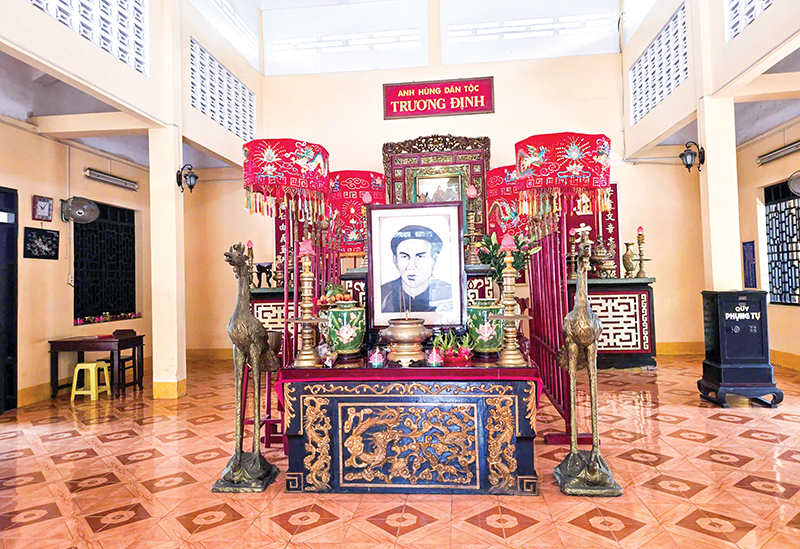
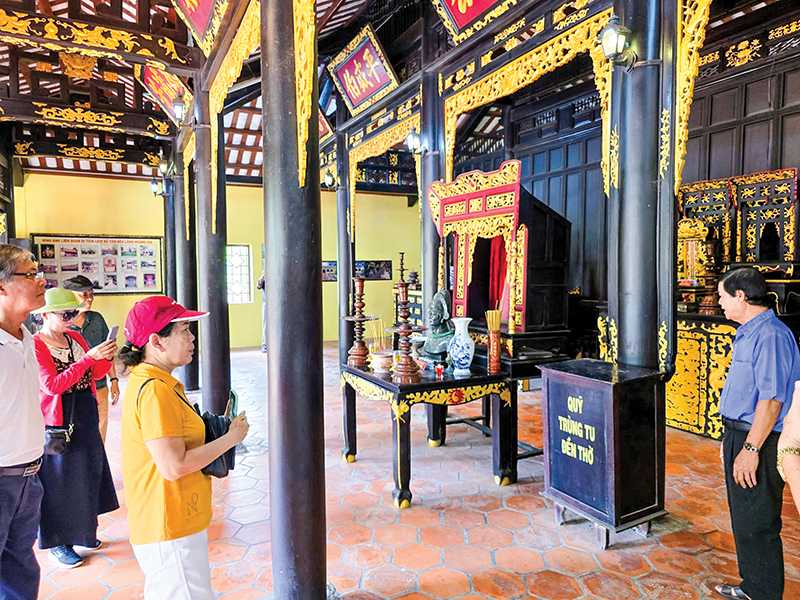



![[Photo] Cutting hills to make way for people to travel on route 14E that suffered landslides](https://vphoto.vietnam.vn/thumb/1200x675/vietnam/resource/IMAGE/2025/11/08/1762599969318_ndo_br_thiet-ke-chua-co-ten-2025-11-08t154639923-png.webp)


![From working for hire to becoming a boss: [Lesson 5] Sending - learning - returning - creating](https://vphoto.vietnam.vn/thumb/402x226/vietnam/resource/IMAGE/2025/11/05/1762297489528_1546-anh-3-072934_320.jpeg)

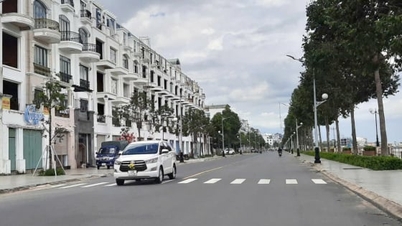
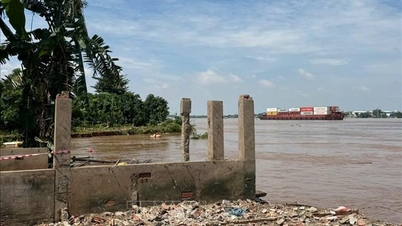














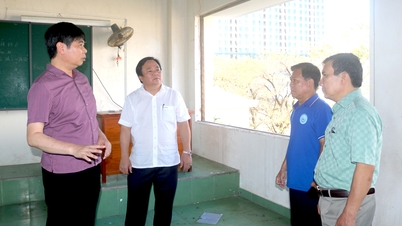


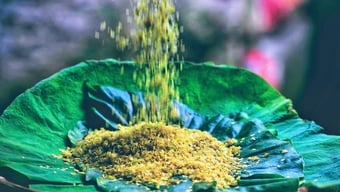











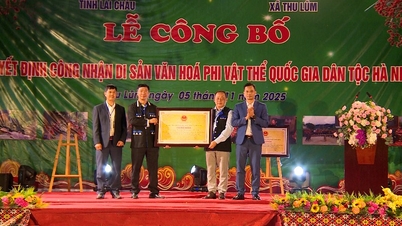


![[Video] Hue Monuments reopen to welcome visitors](https://vphoto.vietnam.vn/thumb/402x226/vietnam/resource/IMAGE/2025/11/05/1762301089171_dung01-05-43-09still013-jpg.webp)



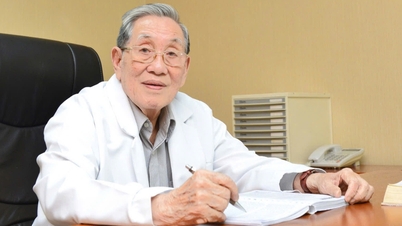

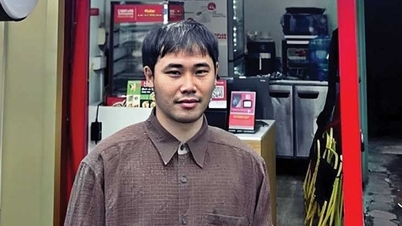


































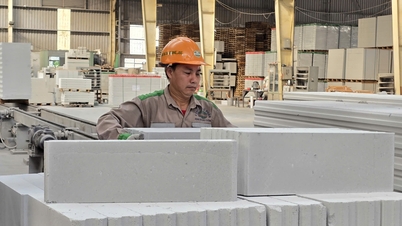





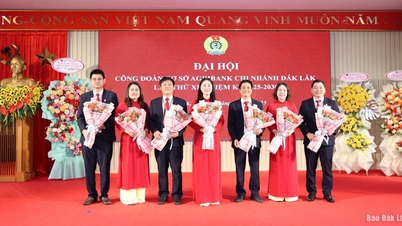


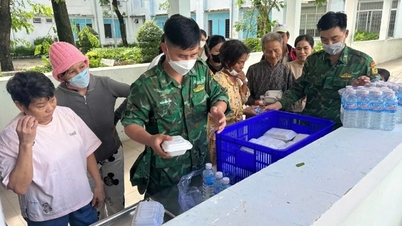
















Comment (0)